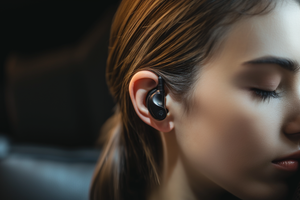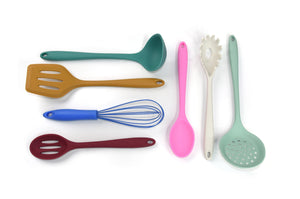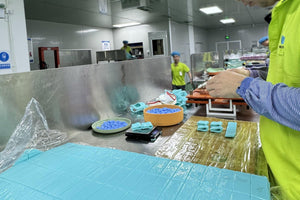Since the mid-19th century, manufacturers across the U.S. and Europe have embraced injection molding as a transformative manufacturing process. Initially used for fabricating plastic parts and products, injection molding has evolved into a versatile and dependable method, supported by advances in resins, polymers, innovative processes, and precision machinery. This evolution has made injection molding a cornerstone of industries such as automotive, electronics, aerospace, medical devices, and consumer goods. Within this domain, understanding the differences between hot runner and cold runner systems is critical for optimizing performance, reducing waste, and achieving superior product quality.
The Role of Runner Systems in Silicone Molding
In injection molding, the runner system directs the molten material from the sprue to the mold cavities. Hot runner and cold runner systems differ significantly in their design and operation:
-
Hot Runner Molds: Utilize a heated manifold system to maintain the material in a molten state throughout the injection process.
-
Cold Runner Molds: Allow the material to solidify in the runner system after each cycle, requiring subsequent ejection and recycling.
The choice between these systems can influence material efficiency, cycle time, and the overall cost-effectiveness of production.
Hot Runner Molds
Key Features and Advantages
-
Reduced Material Waste: Hot runner systems eliminate the solidified runner material, resulting in minimal waste.
-
Faster Cycle Times: Continuous molten flow reduces cooling requirements, enhancing production speed.
-
Improved Consistency: Uniform temperature control ensures precise filling and reduces defects.
-
Design Versatility: Facilitates intricate geometries and multi-cavity designs.
Challenges and Considerations
-
Higher Upfront Costs: Initial investment in heated manifolds and controllers is significant.
-
Complex Maintenance: Systems require regular upkeep to prevent nozzle blockages and maintain temperature consistency.
-
Material Sensitivity: Silicone and other heat-sensitive materials demand precise thermal regulation to avoid degradation.
Hot runner molds are well-suited for high-volume production and applications requiring high precision, such as medical devices and automotive components.
Cold Runner Molds
Key Features and Advantages
-
Lower Initial Costs: Simpler design reduces tooling expenses.
-
Ease of Maintenance: Fewer components translate to easier cleaning and repairs.
-
Material Flexibility: Accommodates frequent changes in material or color.
Challenges and Considerations
-
Increased Material Waste: Solidified runners must be recycled or discarded, adding to waste and costs.
-
Longer Cycle Times: Cooling and ejection extend the production process.
-
Limited Complexity: Certain designs may not be feasible due to flow dynamics.
Cold runner molds are ideal for small-to-medium production volumes, cost-sensitive projects, and applications requiring frequent adjustments.
Comparative Analysis: Choosing the Right System
Factors to Evaluate
-
Production Volume: Hot runners are cost-effective for high-volume runs, while cold runners suit lower volumes.
-
Part Complexity: Intricate designs benefit from the precision of hot runners.
-
Material Properties: Cold runners handle diverse materials, including those sensitive to heat.
-
Budget Constraints: Cold runners offer an economical entry point but may incur higher operational costs over time.
Optimizing Runner System Design
A well-designed runner system enhances efficiency by:
-
Ensuring balanced filling of cavities.
-
Minimizing material waste.
-
Reducing injection pressure requirements.
-
Allowing for faster cycle times.
For instance, large runners facilitate material flow at lower pressures but extend cooling times, whereas smaller runners optimize material and energy usage. Proper sizing depends on the injection pressure capabilities of the molding machine and the specific material properties.
In Summary
Hot runner and cold runner systems each offer unique advantages in the silicone industry. While hot runners excel in efficiency, precision, and reduced waste, cold runners provide flexibility, cost savings, and ease of maintenance. By evaluating production requirements, material considerations, and budgetary constraints, manufacturers can choose the system that best aligns with their operational goals. This decision is pivotal for achieving high-quality outcomes, minimizing environmental impact, and maximizing economic value in silicone molding.
For more information about hot runner vs. cold runner injection molding or to obtain a quote, contact Wolife. Our team can assist you in performing a comprehensive cost/benefit analysis of these systems. We’ll help you determine the best approach for your project based on part specifications, production requirements, and material properties. Partner with us to achieve optimal results in your silicone molding operations.
About Author
We are dedicated to pushing the boundaries of possibility in silicone product manufacturing and our extensive range of inhouse designs and molds across baby, pet, homewares and more allows companies to customize and create products specific for their brand and market needs.
Whether you are looking for a company to bring your ideas and brand to life or looking for ready to go items with packaging and branding, WOLIFE is ready to help your business grow.
WOLIFE looks forward to collaborating with you!


 Using LSR in Hearing Components
Using LSR in Hearing Components Why Silicone Cooking Utensils and Baking Trays Don’t Melt – The Science Explained
Why Silicone Cooking Utensils and Baking Trays Don’t Melt – The Science Explained 10 Creative Products You Didn’t Know Could Be Made with Silicone
10 Creative Products You Didn’t Know Could Be Made with Silicone Common Quality Control Challenges in Silicone Manufacturing
Common Quality Control Challenges in Silicone Manufacturing